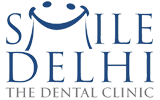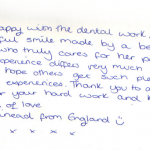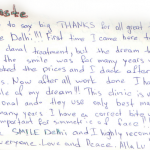Our oral health involves more than just your teeth. Our mouth is a moist environment, home to huge amounts of breeding bacteria, and an ideal place for infection. Although your teeth should be kept in great shape and cared for on a regular basis. You also need to care for your gums and the interior of your mouth ...
Blog
There are various problems associated with dental and oral health. One of the most frequent one is pericoronitis. Pericoronitis can develop when a tooth only partially erupts. It is a disorder in which the gum tissue around an incompletely erupted tooth (crown portion) becomes swollen and infected. This disorder usually occurs as a result of 3rd molar or wisdom tooth where gum tissue ...
Deep bite is the most detrimental to the teeth and health of the jaw joints. It can significantly impact the appearance of your smile (facial esthetics) as the upper teeth can wear on the chewing surfaces, over time. If you have a deep bite, it means your upper front teeth bite too deeply (overlap) over the lower front ...
Every tooth has an external protective layer known as enamel. Enamel is an outer layer on the visible part of the crown of the tooth. It is the hardest and most highly mineralized substance of the body. It prevents bacteria from damaging the inner pulp of the teeth. The hard covering comes from the minerals such as calcium phosphate and ...
People who are self-conscious about the appearance of their teeth and gums often find themselves hesitant to smile in public, keeping their mouths closed in photos and even covering their mouths when they laugh. Fortunately, modern dentistry offers a potentially ideal solution for these people in the form of fully customized smile makeover treatment plans. Each smile makeover plan contains a precise ...
People often don't realize the importance of baby teeth. Some children lose their milk or baby teeth too soon. Baby teeth normally stay in place to keep space available until permanent ones push them out and take their place to grow in healthily. When baby teeth are lost, it paves a way for permanent teeth to grow in. Baby teeth ...
Smile expresses happiness. Smile is influenced not only by the position, shape and color of teeth but also the appearance of gums. Gums have an essential role to play for enhancing our smile. They make our overall appearance beautiful and we all wish to have pink and healthy gums. Slightly darkening of gums tends to make us self-conscious about our face. If dark-colored gums ...
Partial dentures bring the beauty back to your smile by replacing missing teeth. It was long thought that removable partial dentures had to be rigid to be effective. Traditionally, removable partial dentures were fabricated from a rigid metal base designed to replace missing teeth in partially edentulous patients. The newer flexible removable partial dentures (RPDs) are being used more and more ...
Properly aligned teeth provide support for each other and for the entire mouth, making normal daily activities, such as chewing and speaking possible. The jaw is designed to have teeth that, when the jaw is closed, align against each other fairly well. This keeps teeth healthy and encourages proper dental health. When teeth are not properly aligned, ...
Diabetes is a disease that can affect the whole body. People with diabetes face a higher than normal risk of oral health problems. People who have diabetes know the disease can cause many complications in the body such as eyes, nerves, kidney, heart and other important systems. Another common health complication is oral health problems. Diabetes affects your body’s ability to ...





























































